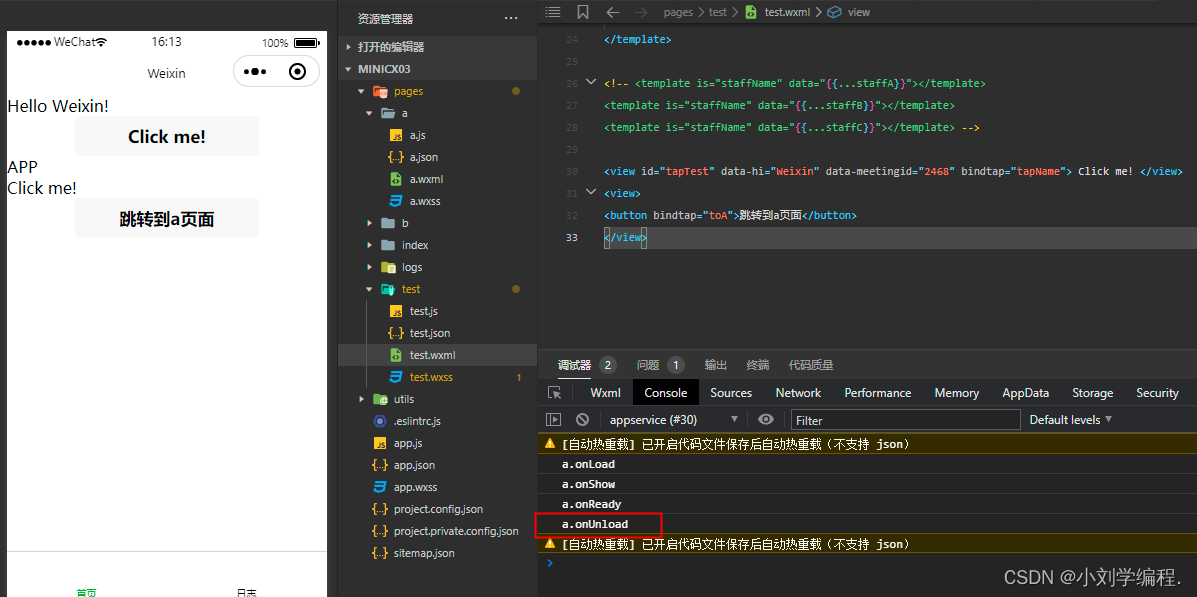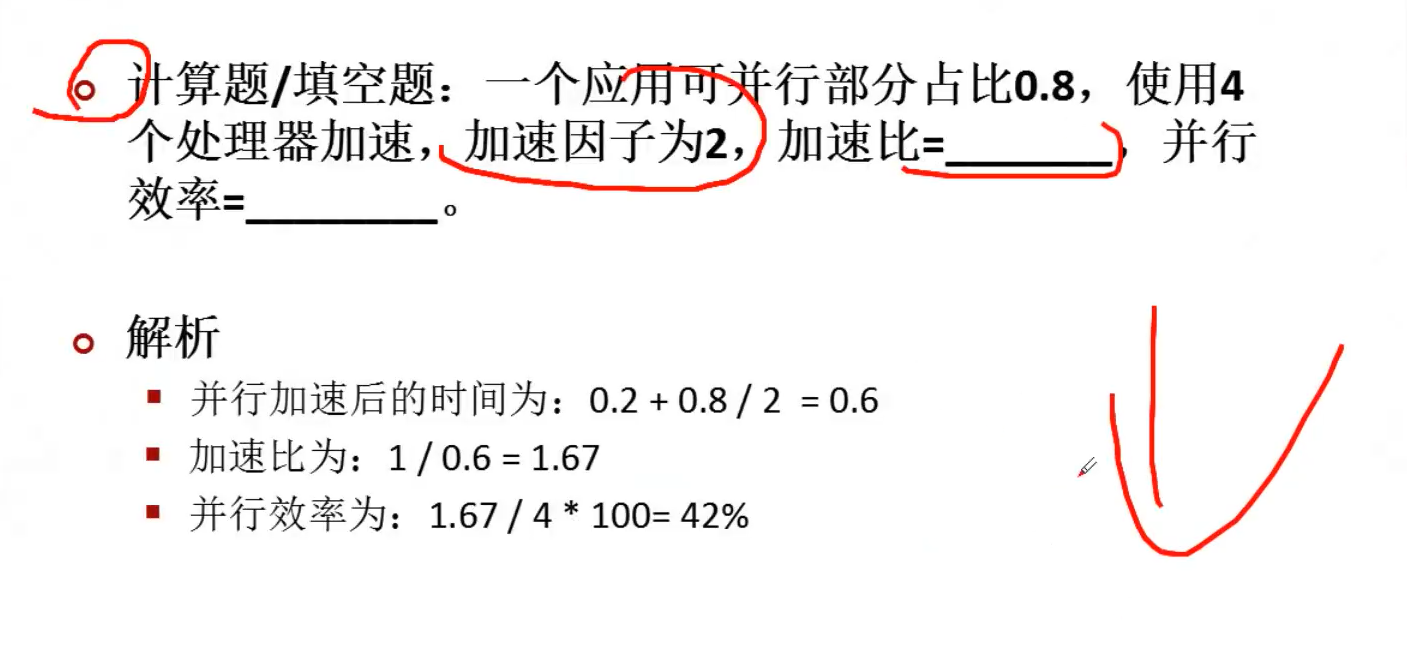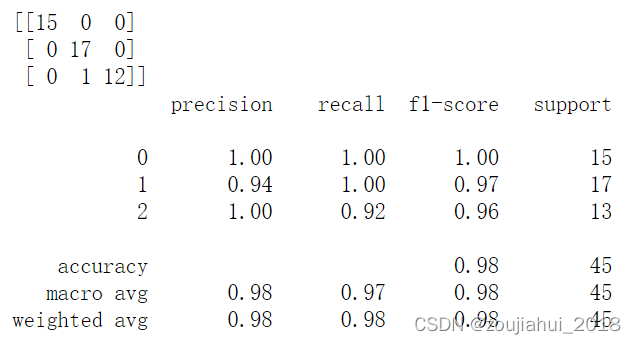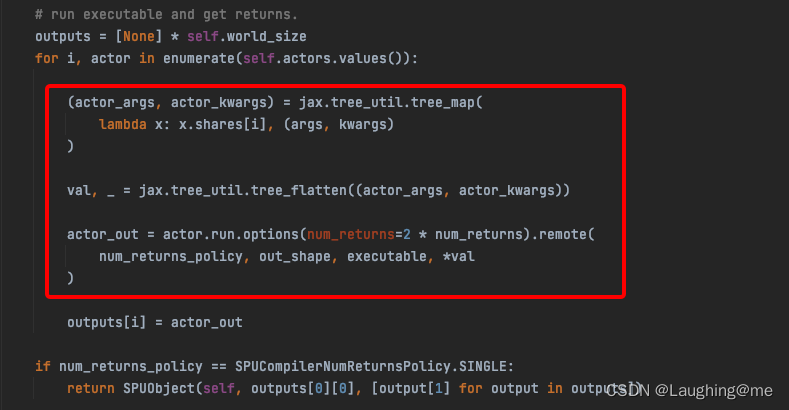1 五大状态


2 线程方法

3 停止线程
- 不推荐使用JDK提供的 stop()、 destroy()方法。【已废弃】
- 推荐线程自己停止下来
- 建议使用一个标志位进行终止变量 ,当flag=false,则终止线程运行。
package xiong.demo3;
public class TestStop implements Runnable{
//1.设置一个标识位
private boolean flag = true;
@Override
public void run() {
int i = 0;
while(flag){
System.out.println("run.....Thread"+i++);
}
}
//2.设置一个公开的方法停止线程,转换标志位
public void stop(){
this.flag = false;
}
public static void main(String[] args) {
TestStop testStop = new TestStop();
new Thread(testStop).start();
for (int i = 0; i < 1000; i++) {
System.out.println("main"+i);
if(i==900){
//调用stop方法切换标志位,让线程停止
testStop.stop();
System.out.println("线程停止了");
}
}
}
}
运行截图
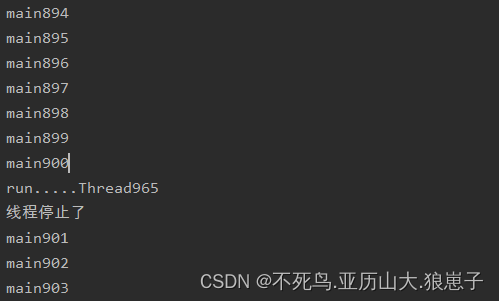
4 线程休眠
- sleep (时间) 指定当前线程阻塞的毫秒数; 1000 ms = 1s
- sleep存在异常InterruptedException;
- sleep时间达到后线程进入就绪状态;
- sleep可以模拟网络延时,倒计时等。
- 每一个对象都有一个锁,sleep不会释放锁;
演示代码
模拟网络延时:放大问题的发生性。
package com.kaung.state;
import java.text.SimpleDateFormat;
import java.util.Date;
import java.util.logging.SimpleFormatter;
//模拟倒计时
public class TestSleep {
public static void main(String[] args) {
//打印系统当前时间
Date startTime = new Date(System.currentTimeMillis()); //获取系统当前时间
while(true){
try {
Thread.sleep(1000);
System.out.println(new SimpleDateFormat("HH:mm:ss").format(startTime));
startTime = new Date(System.currentTimeMillis()); //更新时间
} catch (InterruptedException e) {
e.printStackTrace();
}
}
}
//模拟倒计时
public static void tenDown() throws InterruptedException {
int num = 10;
while(true) {
Thread.sleep(1000);
System.out.println(num--);
if(num<=0){
break;
}
}
}
}5 线程礼让
- 礼让线程,让当前正在执行的线程暂停,但不阻塞
- 将线程从运行状态转为就绪状态
- 让cpu重新调度,礼让不一定成功!看CPU心情
代码模拟
package xiong.demo3;
public class TestYield {
public static void main(String[] args) {
MyYield myYield = new MyYield();
new Thread(myYield,"a").start();
new Thread(myYield,"b").start();
}
}
class MyYield implements Runnable{
@Override
public void run() {
System.out.println(Thread.currentThread().getName()+"线程开始执行");
Thread.yield();//线程礼让
System.out.println(Thread.currentThread().getName()+"线程停止执行");
}
}运行结果

总结
礼让不一定成功,需要看cpu心情
6 Join
- Join合并线程,待此线程执行完成后,再执行其他线程,其他线程阻塞
- 可以想象成插队
代码
package xiong.demo3;
public class TestJoin implements Runnable {
@Override
public void run() {
for (int i = 0; i < 1000; i++) {
System.out.println("线程VIP来了"+i);
}
}
public static void main(String[] args) throws InterruptedException {
//启动我们的线程
TestJoin testJoin = new TestJoin();
Thread thread = new Thread(testJoin);
thread.start();
for (int i = 0; i < 500; i++) {
if(i==200){
thread.join();
}
System.out.println("main"+i);
}
}
}
运行结果
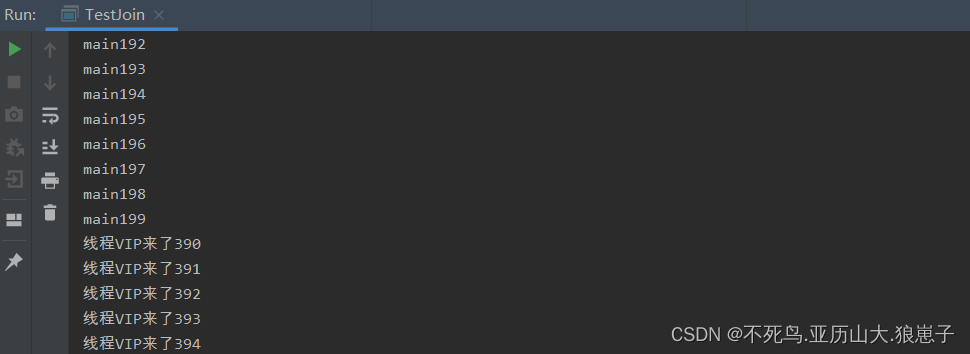
根据运行结果可以看出,在join之前,两线程是交叉运行的,join后,要等join的线程执行完再执行下一个线程。
7 线程状态观测
JDk帮助文档

观察线程状态
package xiong.demo3;
public class TestState {
public static void main(String[] args) throws InterruptedException {
Thread thread = new Thread(()->{
for (int i = 0; i < 5; i++) { //让线程睡眠5s
try {
Thread.sleep(1000);
} catch (InterruptedException e) {
e.printStackTrace();
}
}
System.out.println("///");
});
//观察状态
Thread.State state = thread.getState();
System.out.println("观察状态:"+state); //NEW
thread.start();//启动线程
state = thread.getState();
System.out.println("启动线程:"+state); //RUN
while(state != Thread.State.TERMINATED){ //只要线程不停止,就一直输出状态
Thread.sleep(100);
state = thread.getState();
System.out.println("运行状态:"+state);
}
}
}
运行结果

线程一旦进入死亡状态,就不能再次启动了。
我们再来回顾一下这张图片。
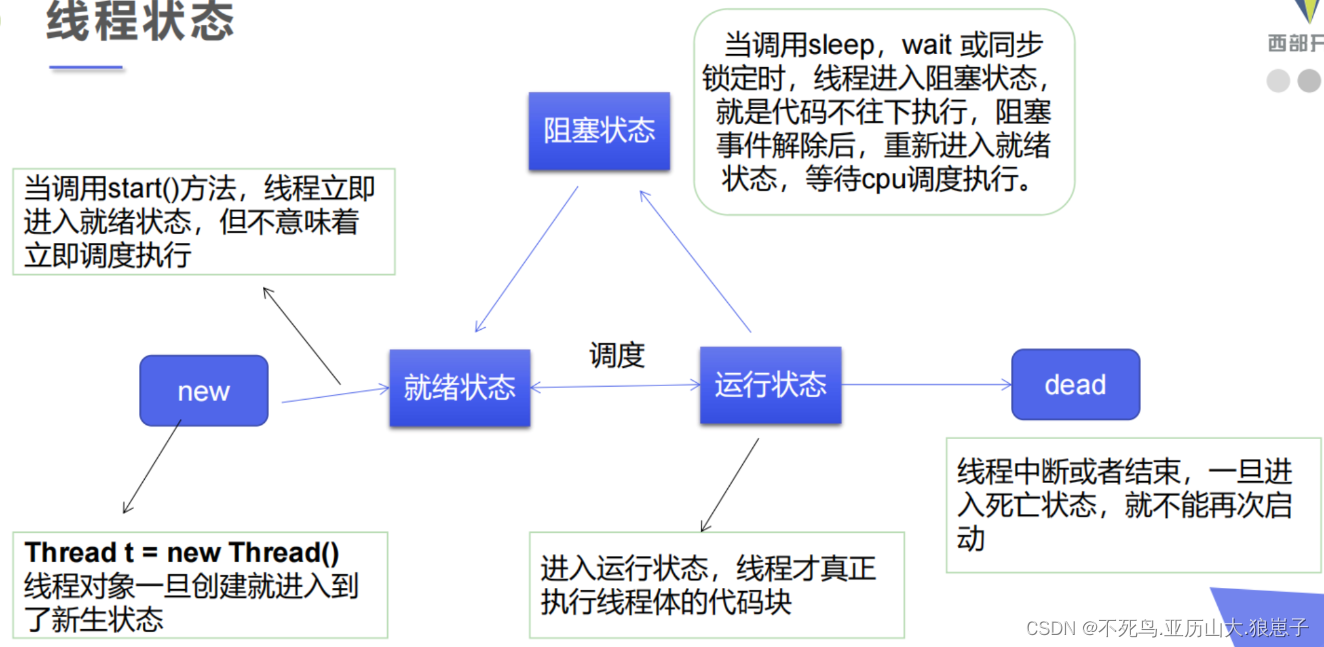
8 线程优先级
- Java提供一个线程调度器来监控程序中启动后进入就绪状态的所有线程,线程调度器按照优先级决定应该调度哪个线程来执行。
- 线程的优先级用数字表示,范围从1~10。
Thread.MIN_PRIORITY = 1;
Thread.MAX_PRIORITY = 10;
Thread.NORM_PRIORITY = 5;
- 使用以下方式改变或获取优先级
getPriority() . setPriority(int xxx)
==优先级的设定建议在start()调度前==
代码


